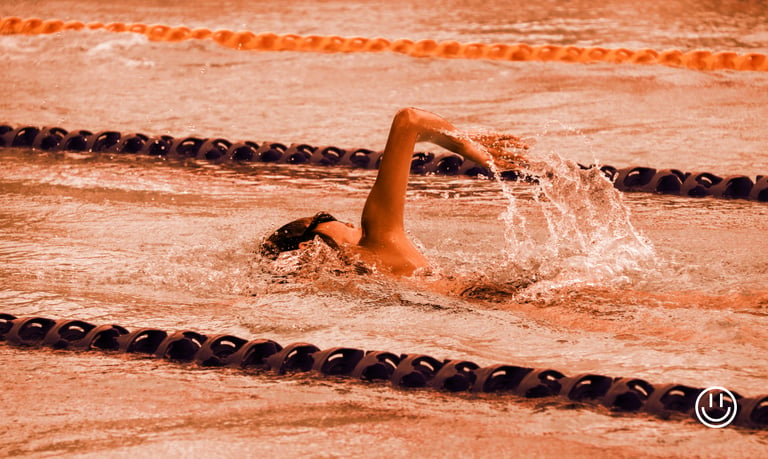Dive into the World of Swimming: A Comprehensive Guide
SPORT


Dive In: Your Ultimate Guide to Swimming Success
Dive into the World of Swimming: A Comprehensive Guide
Introduction to swimming
Swimming is a popular and versatile sport that offers a full-body workout, improves cardiovascular health, and provides an excellent way to relax and unwind. Whether you are a beginner looking to learn the basics or an experienced swimmer aiming to refine your technique, this guide will cover everything you need to know about swimming, including its types, how to swim, necessary precautions, alternatives, swimming gear, and frequently asked questions.
What is Swimming?
Swimming is the act of propelling oneself through water using various arm and leg movements. It is both a recreational activity and a competitive sport, with events ranging from short sprints to long-distance marathons.
Types of Swimming
Swimming can be categorized into several styles, each with its unique technique and purpose. Here are the main types of swimming strokes:
1. Freestyle (Front Crawl): The most common and fastest swimming stroke, characterized by an alternating arm movement and a flutter kick.
2. Backstroke: Swum on the back with an alternating arm movement and a flutter kick, allowing the swimmer to breathe easily.
3. Breaststroke: A slower stroke that involves simultaneous movements of the arms and a frog-like kick, known for its distinctive glide phase.
4. Butterfly: A powerful and demanding stroke with a simultaneous arm movement and a dolphin kick, requiring excellent timing and strength.
5. Individual Medley (IM): A combination of the four strokes (butterfly, backstroke, breaststroke, and freestyle) performed in a specific order during a single race.
### How to Swim: Basic Techniques
Getting Started
1. Entering the Water: Start by entering the water slowly, acclimating your body to the temperature
2. Breathing: Practice breathing techniques, inhaling through the mouth and exhaling through the nose or mouth.
3. Floating: Learn to float on your back and stomach to understand buoyancy and body position.
Basic Strokes
1. Freestyle (Front Crawl):
- Keep your body streamlined.
- Alternate arm movements in a windmill motion.
- Flutter kick continuously.
- Turn your head to the side to breathe.
2. Backstroke:
- Lie on your back with a streamlined body position.
- Alternate arm movements, keeping your arms straight.
- Perform a flutter kick.
- Keep your head steady, with ears in the water.
3. Breaststroke:
- Start with your arms extended forward.
- Pull your arms back simultaneously while performing a frog kick.
- Glide after each kick to maximize efficiency.
- Lift your head to breathe during the arm pull.
4. Butterfly:
- Begin with both arms extended forward.
- Pull both arms back simultaneously.
- Perform a dolphin kick by moving your legs together in a wave-like motion.
- Breathe during the arm pull.
Precautions for Swimming
1. Warm-Up: Always perform a proper warm-up to prevent muscle strains.
2. Supervision: Never swim alone; always have someone nearby in case of emergencies.
3. Hydration: Stay hydrated before, during, and after swimming.
4. Proper Gear: Use appropriate swimming gear to enhance performance and safety.
5. Know Your Limits: Avoid overexertion and take breaks as needed.
6. Water Safety: Be aware of the water conditions, currents, and weather forecasts.
Alternatives to Swimming
If swimming is not accessible or suitable, consider these alternatives that offer similar benefits:
1. Aquatic Exercises: Water aerobics, water jogging, and aqua Zumba.
2. Dry Land Workouts: Running, cycling, and rowing.
3. Indoor Swimming Machines: Swim spas and endless pools.
4. Yoga and Pilates: Improve flexibility, strength, and breathing techniques.
Swimming Gear
To enhance your swimming experience, invest in the following gear:
1. Swimsuit: Choose a comfortable and durable swimsuit designed for swimming.
2. Goggles: Protect your eyes and improve visibility underwater.
3. Swim Cap: Reduce drag and keep hair out of your face.
4. Kickboard: Assist with kicking drills and leg strength.
5. Pull Buoy: Focus on arm strokes by providing buoyancy to the lower body.
6. Fins: Improve leg strength and technique.
7. Earplugs and Nose Clip: Prevent water from entering your ears and nose.
FAQs
Q1: How often should I swim to see health benefits?
A1: Aim to swim at least 3-4 times a week for 30-60 minutes to see significant health benefits.
Q2: Can swimming help with weight loss?
A2: Yes, swimming is an effective calorie-burning exercise that can aid in weight loss when combined with a healthy diet.
Q3: Is swimming safe for people with joint problems?
A3: Swimming is a low-impact exercise that is gentle on the joints, making it suitable for people with arthritis or other joint issues.
Q4: How can I improve my swimming technique?
A4: Consider taking swimming lessons, practicing regularly, and using swimming aids like kickboards and fins to improve technique.
Q5: What should I eat before and after swimming?
A5: Before swimming, eat a light meal or snack rich in carbohydrates and protein. After swimming, refuel with a balanced meal containing protein, carbohydrates, and healthy fats.
Conclusion
Swimming is a versatile and enjoyable sport that offers numerous physical and mental health benefits. Whether you are swimming for fitness, competition, or recreation, understanding the basics, using the right gear, and taking necessary precautions will help you make the most of your time in the water. Dive in, stay safe, and enjoy the many rewards that swimming has to offer!
---
For more tips, techniques, and swimming-related content, subscribe to our blog and follow us on social media.
- Facebook:
- Twitter:
- Instagram:
Contact Us
Have questions or suggestions? Contact us at info@bukars.com
---
This comprehensive guide covers all aspects of swimming, making it a valuable resource for beginners and experienced swimmers alike.
